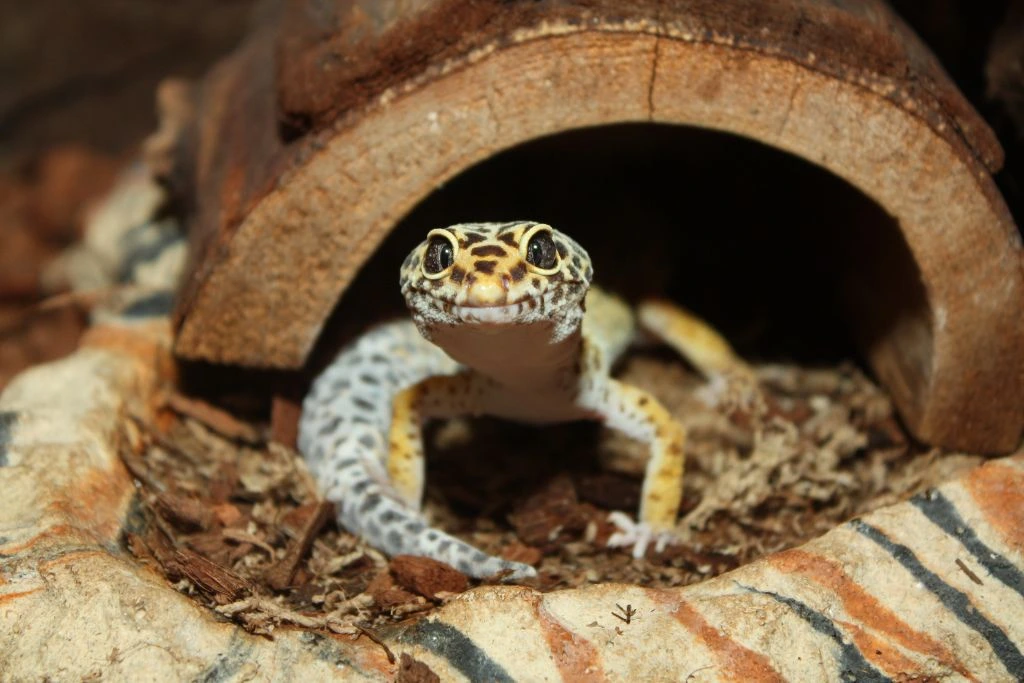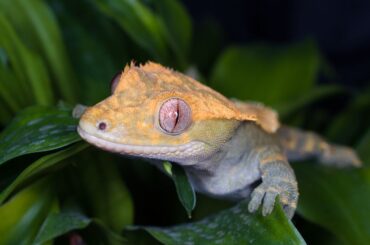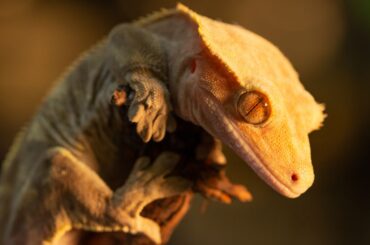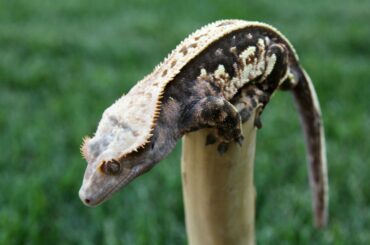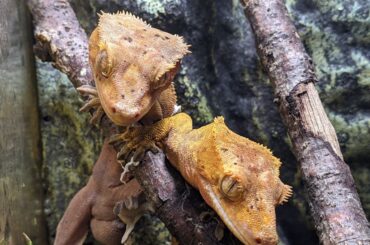Do you have a beautiful leopard gecko and want to provide it with the best bedding possible so it can live a long and healthy life in its environment? Put away your search! Following this guidance, you will be able to confidently select the “best bedding for leopard geckos.”
What would you say is the best bedding for leopard geckos? The health of your leopard geckos depends on your careful consideration of their substrate. These cute reptiles can find differing degrees of safety, cleanliness, and comfort on various substrates.
What makes understanding leopard gecko substrate so crucial? For the sake of your leopard gecko’s health and pleasure, you must learn the importance of providing them with appropriate bedding. The correct substrate can simulate their native habitat, encourage cleanliness, and lessen the likelihood of any resulting health problems.
This article is for you if you have a leopard gecko and care about its well-being. We realize the importance of researching and identifying the best bedding for leopard geckos to create a pleasant environment.
Finding the best leopard gecko substrate for your pet requires some preliminary research. What exactly is the optimal substrate for leopard geckos? We’ll analyze several possibilities and talk about their benefits.
Factors to Consider When Choosing Leopard Gecko Substrate
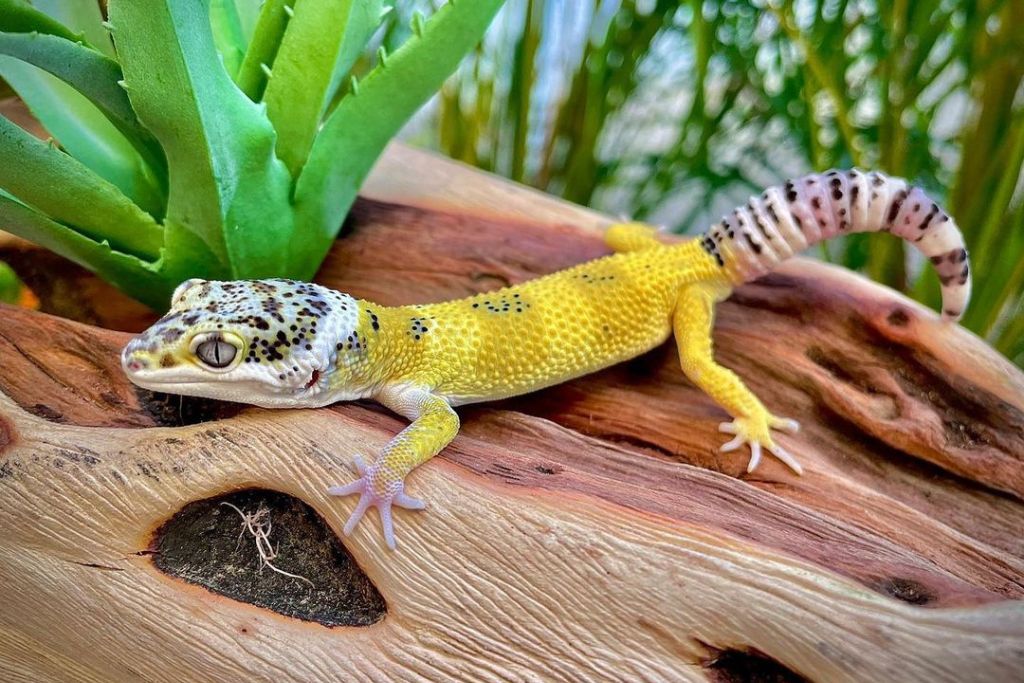
When choosing the suitable medium for your leopard gecko, there are a few important things to keep in mind. If you know about these things, you can make a good choice for your scaly friend’s health and happiness. Let’s look at the most important points:
Price
Considering the cost-effectiveness of different substrate options is essential. While some may require a higher initial investment, they might last longer and prove more economical in the long run. Balancing the initial cost with the substrate’s longevity is crucial to ensure you get the best leopard gecko bedding for your leopard geckos without breaking the bank.
Overall Cleanliness – Hygiene Matters
Keeping your leopard gecko’s habitat clean is vital for their health. Some substrates demand frequent spot cleaning, while others allow easy removal and thorough cleaning. Choosing a substrate that simplifies the cleaning process contributes to better hygiene and a healthier environment for your pet.
Longevity – Durability and Replacement
Substrates come with different lifespans, meaning some will need replacement more often than others. Opting for substrates that last longer and require less frequent replacement can be both convenient and cost-effective in the long term.
Safety First – Protecting Your Gecko
Your leopard gecko’s safety is paramount. Ensure you choose non-toxic substrates, free from sharp edges or particles that could harm or be ingested by your pet.
Mimicking the Natural Habitat – A Sense of Comfort
Leopard geckos are native to sandy environments, so selecting substrates closely mimicking their natural habitat is vital. This provides a sense of familiarity and comfort for your gecko, encouraging natural behaviors and enhancing their overall quality of life.
By considering these essential factors, you can confidently select the best bedding for leopard geckos that suits your pet’s needs and preferences.
10 Best Substrate Choices for Leopard Geckos
The best bedding for leopard geckos has unique benefits to improve your pet’s habitat. Understanding these substrates’ pros and cons helps you choose one that suits your gecko. Let’s explore the possibilities and find your leopard geckos’ ideal bedding!
Bioactive Substrate
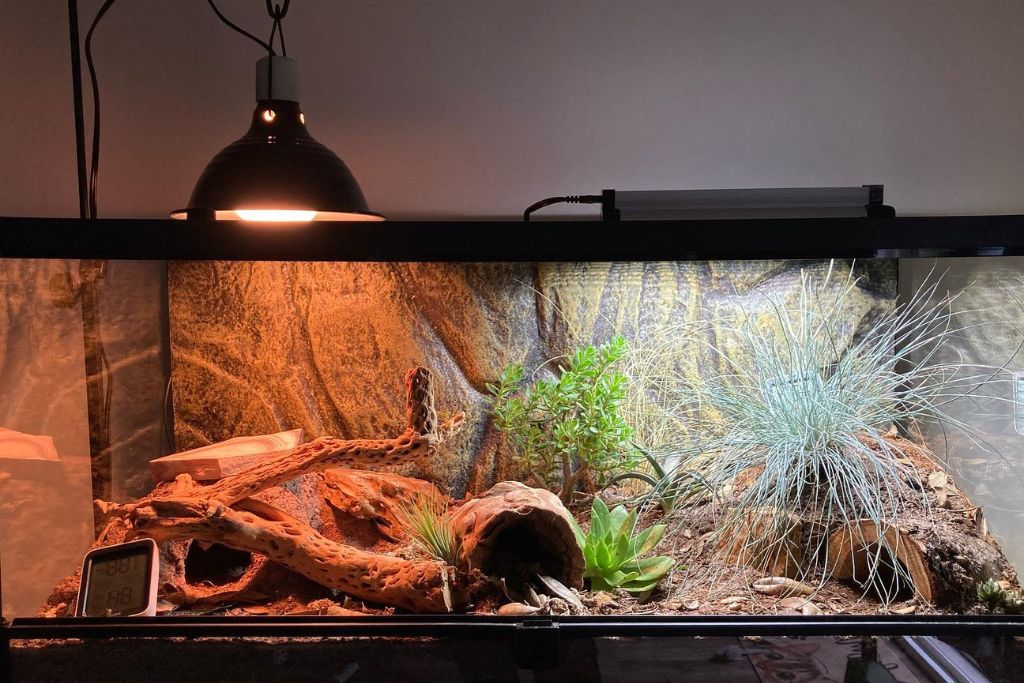
Many people who love leopard geckos use bioactive substrates because they have many good benefits for them. These materials are made to create a self-sustaining environment inside the enclosure that is similar to the gecko’s natural habitat.
It maintains a humid, enclosed environment, preventing dry, sticky shed on your gecko’s skin when shedding. Moisture retention keeps leopard geckos hydrated. Springtails and isopods break and digest trash and organic debris, lowering odor and reducing substrate changes.
Shelf Liner
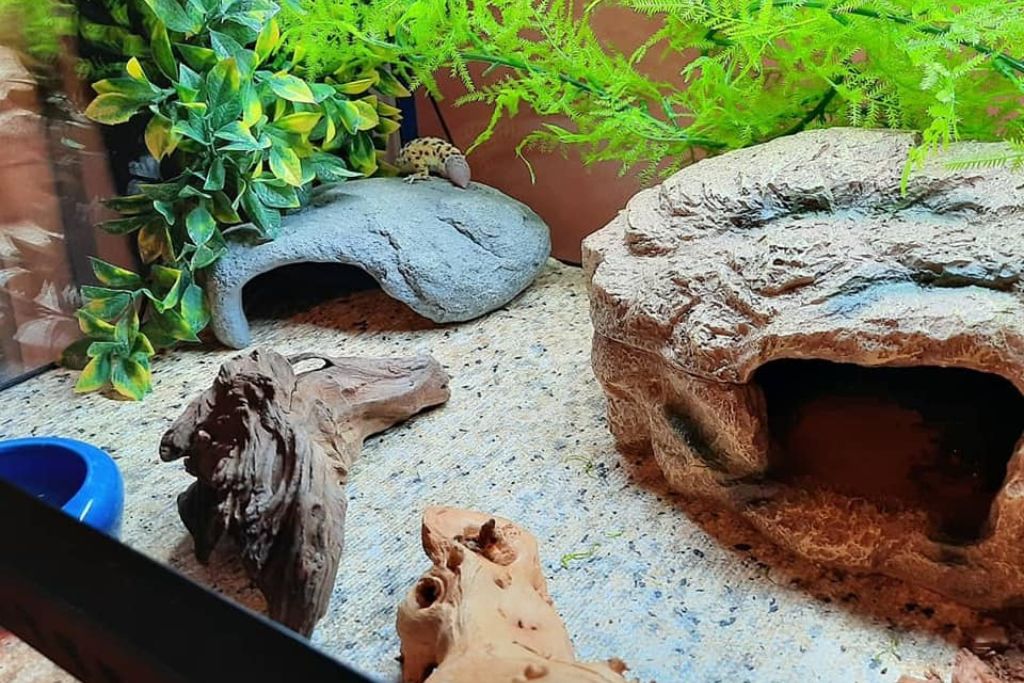
Leopard geckos can benefit from shelf liner, which isn’t as realistic as bioactive surfaces. It mimics the roughness of their natural habitat, giving them a sturdy and secure platform to tread on.
The shelf liner is non-absorbent, making enclosure hygiene easier. It does not create a humid enclosure microclimate. Leopard gecko owners may like this feature because it improves habitat humidity control. Shelf liner can be removed and cleaned, keeping your gecko’s surroundings clean and odor-free.
Reptile Carpet
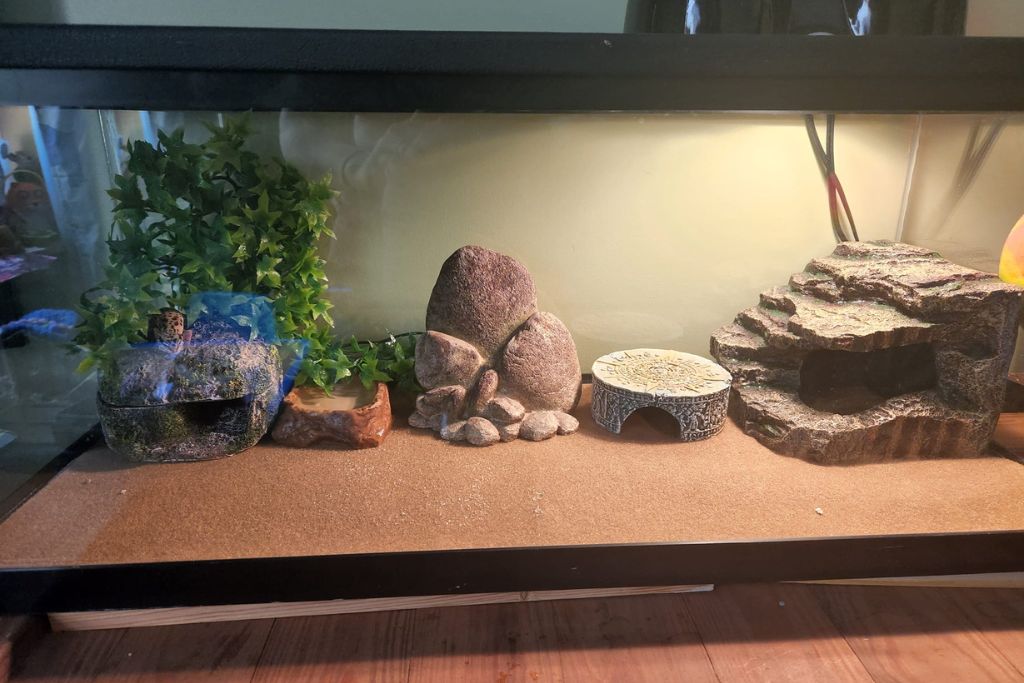
Leopard geckos benefit from reptile carpet, yet it doesn’t mimic nature or bioactive substrates. For geckos that eat substrate, it offers a sturdy, impaction-free surface. Reptile carpet is easy to clean and maintain, preventing germs and odor buildup in the habitat.
The reptile carpet is non-absorbent and does not maintain enclosure humidity, so leopard gecko owners who want more humidity control may benefit. Reptile carpet may be easily removed, cleaned, and sanitized to keep your gecko clean.
Sand
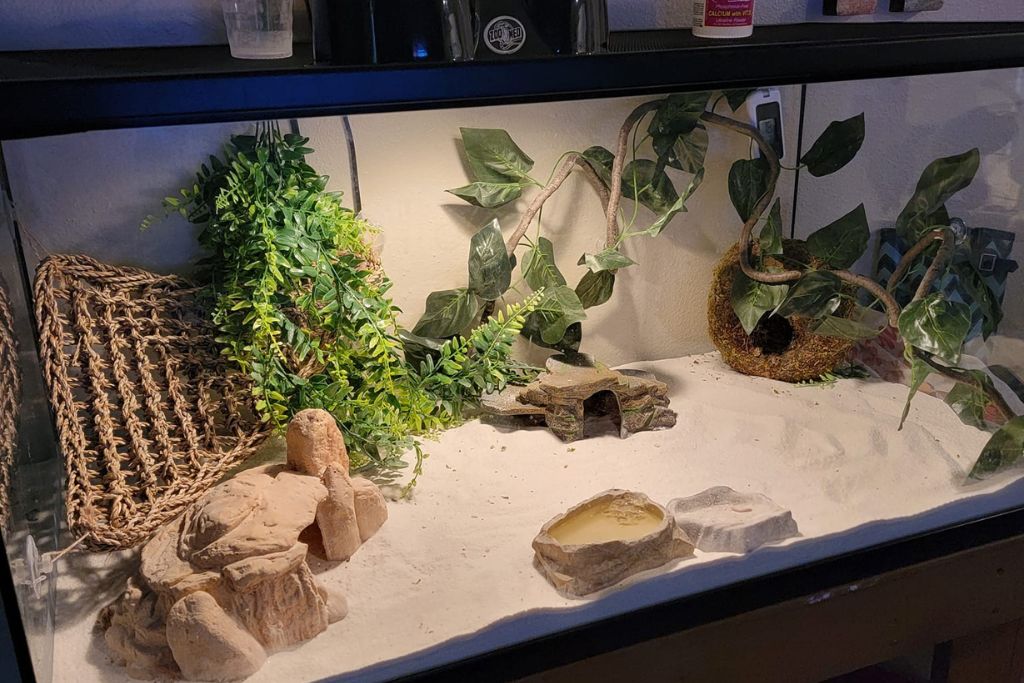
Leopard geckos’ native habitat is sand. Its fine sand particles simulate a natural surface for your gecko. Calcium sand and play sand have varied textures and colors, letting leopard geckos dig and burrow naturally in it.
Sand has drawbacks, though. If your gecko eats sand while feeding or exploring, it could impact its health. Feeding dishes and close gecko monitoring can reduce this risk. To minimize trash and bacteria development, sand substrates need regular cleaning and upkeep. To keep your gecko healthy and their habitat clean, replace filthy sand.
Newspaper or Paper Towel
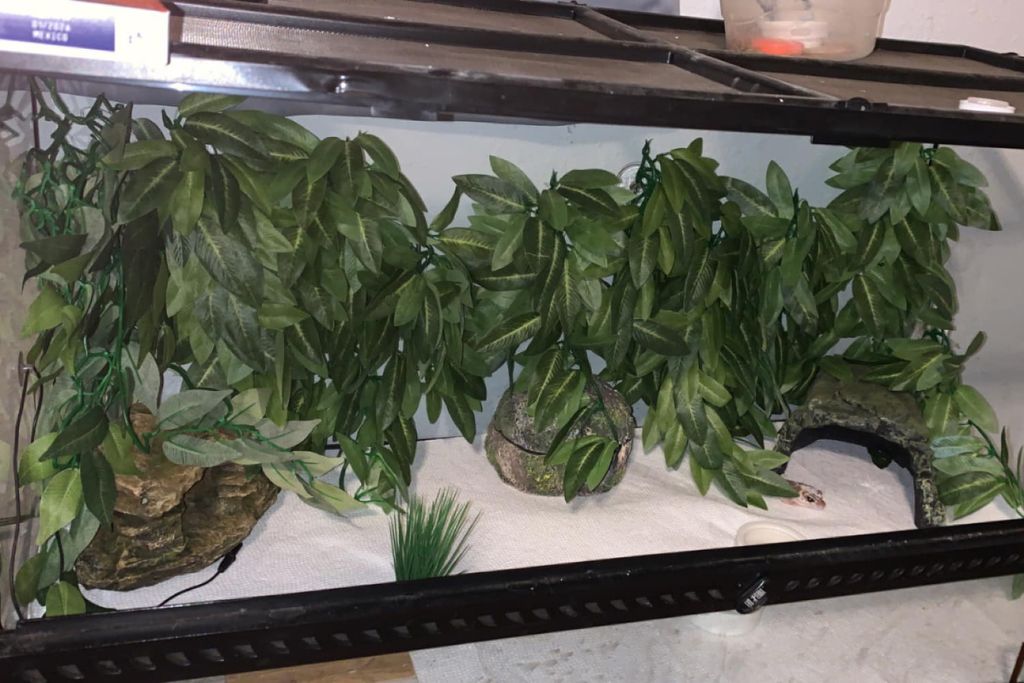
Newspaper or paper towels can be used in a leopard gecko’s habitat. It’s practical and easy to maintain, but it doesn’t replicate geckos’ native surroundings. Newspaper or paper towels provide a smooth substrate for your gecko. Ingestion is safe and non-toxic, lowering impaction risk.
They’re easy to change, keeping your gecko’s habitat clean. This substrate reduces bacterial growth and odor. Leopard gecko owners seeking a low-cost, easy-to-clean, hygienic substrate might consider these options.
Stone Slate
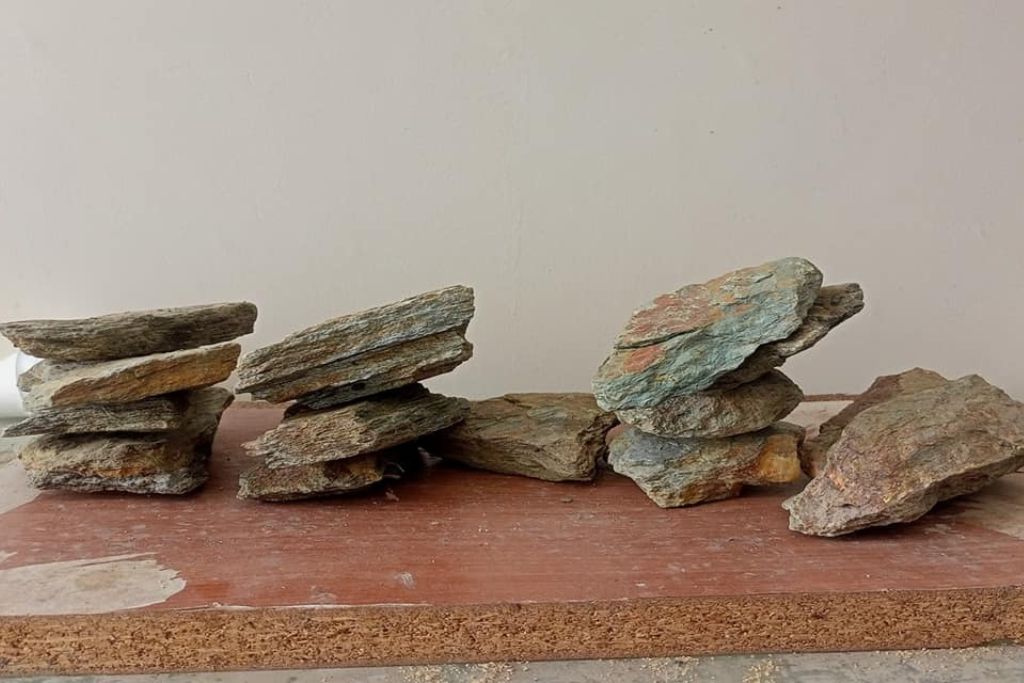
Stone slate can create a realistic leopard gecko habitat. Flat, smooth stone slabs mimic natural rocks. Stone slate makes a natural and intriguing substrate or habitat décor for your gecko. This substrate allows your gecko to climb and bask, mimicking their natural habitat.
Stone slate does not absorb moisture or increase enclosure humidity, so leopard gecko owners who want better humidity control may benefit from this option. To protect your gecko, the stone must be non-toxic and free of sharp edges or rough surfaces.
Excavator Clay
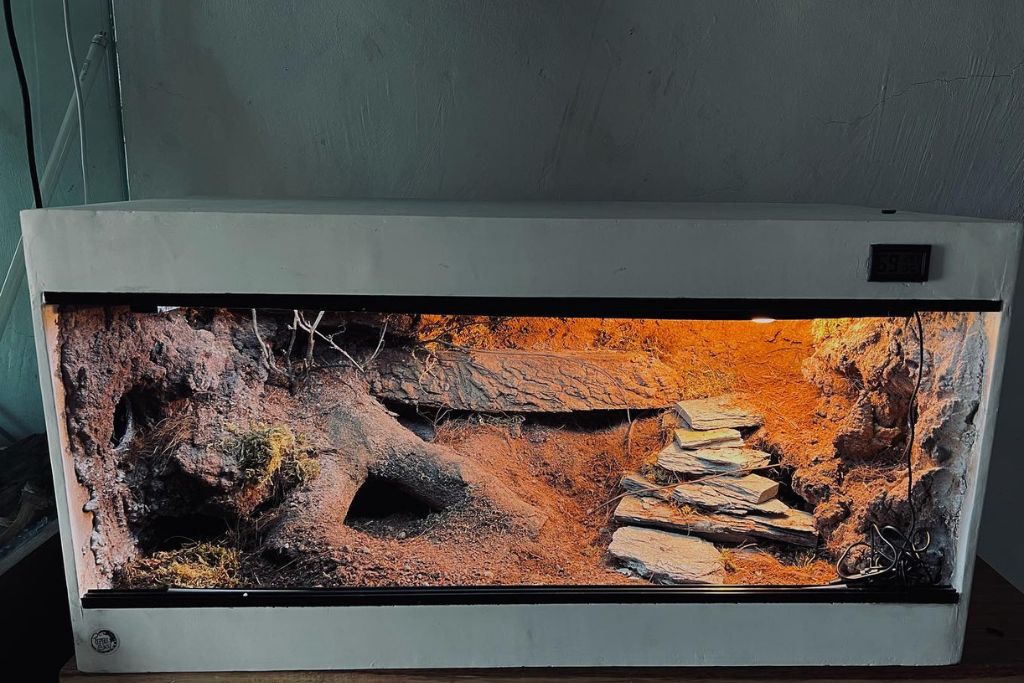
Excavator clay lets leopard gecko enclosures have custom caves and tunnels. It is a clay-based substrate that can be moistened and shaped to enrich and engage your gecko. Excavator clay helps leopard geckos burrow and dig, motivating them cognitively and physically.
Moist excavator clay absorbs. When wet, it provides a humidc. This hydrates and sheds leopard geckos. Clay can be molded to remove stains and freshen the substrate. Spot cleaning is still necessary.
Tile Flooring
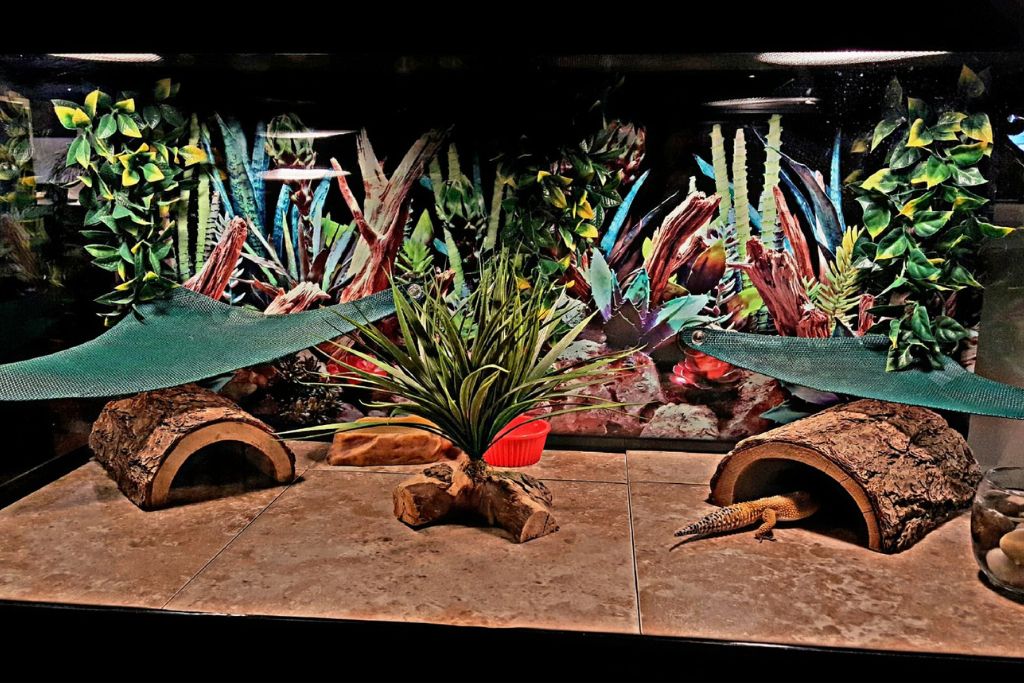
Leopard geckos may use tile floors. Ceramic or porcelain tiles help geckos and owners maintain a clean and healthy habitat. Non-porous tiles repel bacteria and odor.
Tile flooring is less gecko-like than other substrates. However, choosing tiles that imitate rocks or uneven surfaces may create a beautiful gecko environment that provides protection and stability. Tiles are non-absorbent.
DIY Blended Substrate
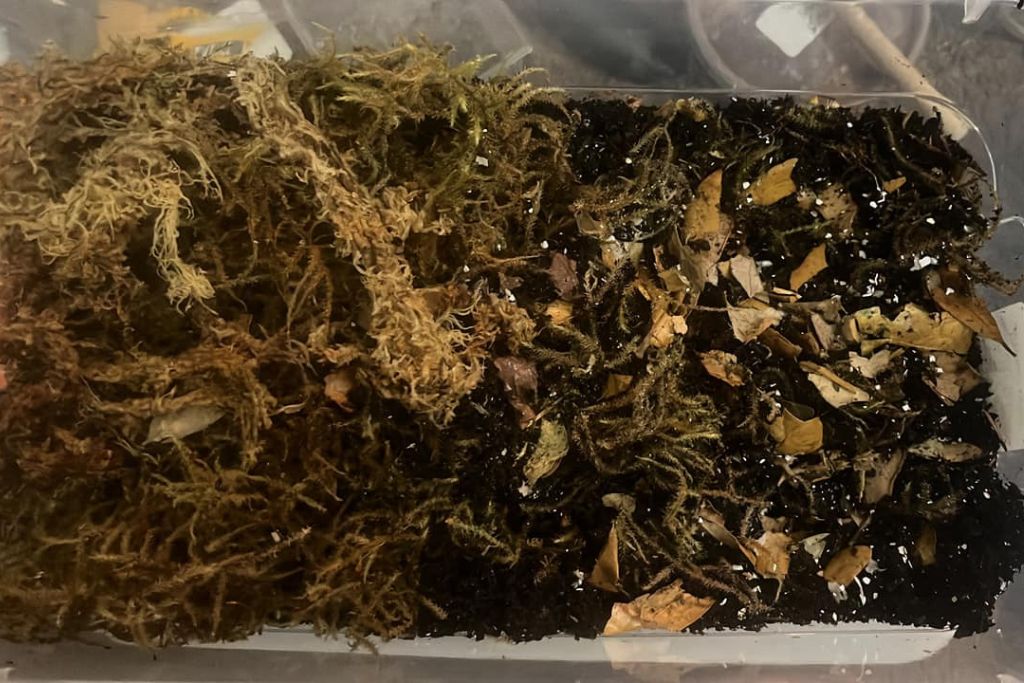
Leopard gecko owners make their own naturalistic substrates by mixing diverse materials. This substrate enables personalization and mimics the gecko’s native surroundings. A DIY blended substrate’s components depend on the gecko owner’s intentions.
The components and amounts of a DIY blended substrate affect its absorbency, hygiene, and cleaning. To maintain cleanliness and minimize waste buildup, DIY mixed substrates need regular spot cleaning and substrate replacement.
Lino
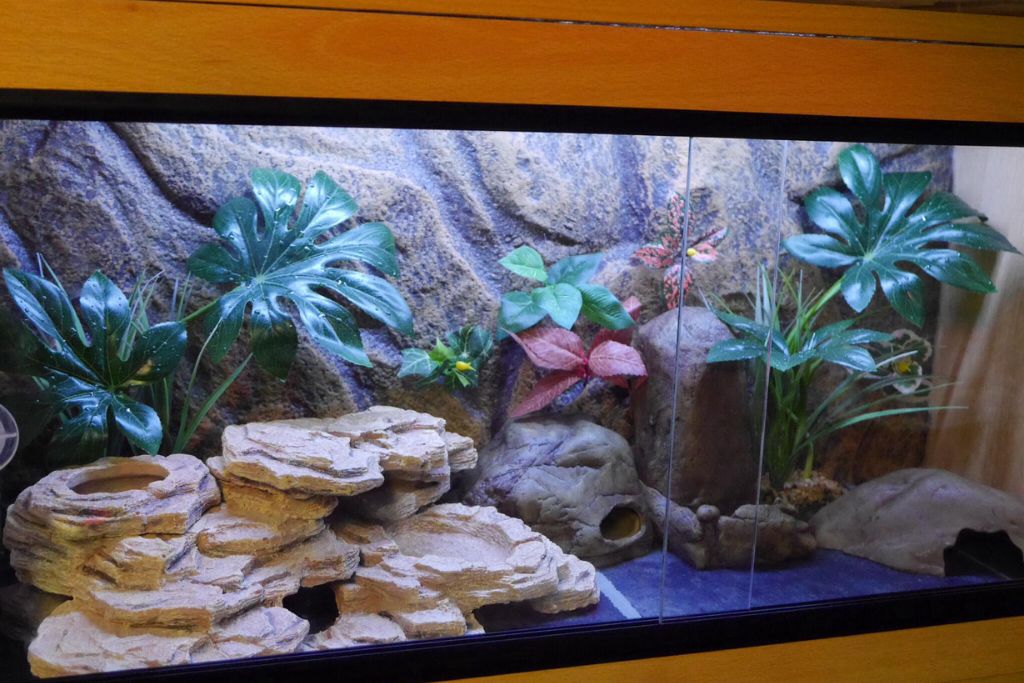
Linoleum, or lino, is a synthetic flooring substance leopard gecko owners can use as it is hygienic. Your gecko may walk on a lino, which simulates natural terrain. Lino is solid and easy for geckos to navigate, even if it doesn’t resemble their native environment. It’s also available in many hues and patterns.
Lino’s non-absorbency makes it a good substrate, as it does not increase enclosure humidity. This can help gecko owners who want more humidity control. Bacteria and odor can be readily cleaned or sanitized. Spot cleaning is easy, and if needed, lino may be removed and professionally cleaned.
Substrates to Avoid for Leopard Geckos
While choosing the best bedding for leopard geckos is essential, it’s equally crucial to be aware of substrates that should be avoided. Some substrates can pose significant risks to your gecko’s health, potentially leading to injuries or health complications.
Coconut Fiber (Coir)
Due to ingestion risks, leopard geckos should avoid coir, or coconut fiber. Geckos can swallow coconut fiber while hunting or exploring their habitat. It can obstruct or impair the intestines, causing serious health problems. Leopard geckos lick or taste their environment, making them more likely to swallow coconut fiber.
Wood Chips and Shavings
Wood chips and shavings are another substrate to avoid for leopard geckos. These materials can lead to digestive issues if ingested. Geckos may eat wood chips or shavings while exploring. Since wood is fibrous and indigestible, it can cause blockages in the digestive system, resulting in serious health problems.
Walnut Shells
Walnut shells are best avoided, as well, as they can lead to impaction in leopard geckos, causing serious health problems due to their sharp edges and hardness. As geckos tend to investigate their surroundings using their tongues, they are more prone to ingesting substrate items, including walnut shells.
Moss
Leopard geckos should stay away from moss due to potential respiratory discomfort. The damp atmosphere created by moss can cause breathing issues for geckos, as the moisture and enclosed conditions can increase bacteria and fungal growth.
Conclusion
Choosing the best bedding for leopard geckos is an important part of being a responsible pet owner and ensuring your pet is healthy and happy. The substrate you choose is a key part of making their habitat look like their natural surroundings, which is important for encouraging their natural behaviors and giving them a safe place to live.
FAQs
What is the Best Substrate for Leopard Geckos?
Leopard geckos require suitable bedding that promotes their well-being and safety. Recommended options include reptile carpet, tile flooring, or bioactive substrates. The choice of substrate depends on factors like age, health, and personal preferences.
What Do Leopard Geckos Need at the Bottom of Their Tank?
Leopard geckos need hiding spots, a water dish, a heat source, appropriate lighting, and climbing structures.
Is Sand Better for Leopard Geckos?
No, sand is not considered better for leopard geckos. In fact, it is generally not recommended as a substrate due to the risk of ingestion and potential digestive issues.
Do Leopard Geckos Like Direct Sunlight?
No, leopard geckos are nocturnal and prefer dim lighting, not direct sunlight.
Do Leopard Geckos Need a Hiding Spot?
Yes, hiding spots are essential for leopard geckos’ security and well-being.
What is the Best Substrate for Leopard Geckos?
The best substrate depends on factors like age, health, and preference. Common options include reptile carpets, tile flooring, or bioactive substrates.
What Do Leopard Geckos Prefer: A Heat Pad or a Heat Lamp?
Leopard geckos benefit from both heat pads and heat lamps for belly heat and basking.
Is Reptile Carpet a Suitable Substrate for Leopard Geckos?
Yes, reptile carpet is a suitable substrate for leopard geckos.
Are Wood Chips and Shavings Safe for Leopard Geckos as Substrate?
No, wood chips and shavings are not safe substrates for leopard geckos.

